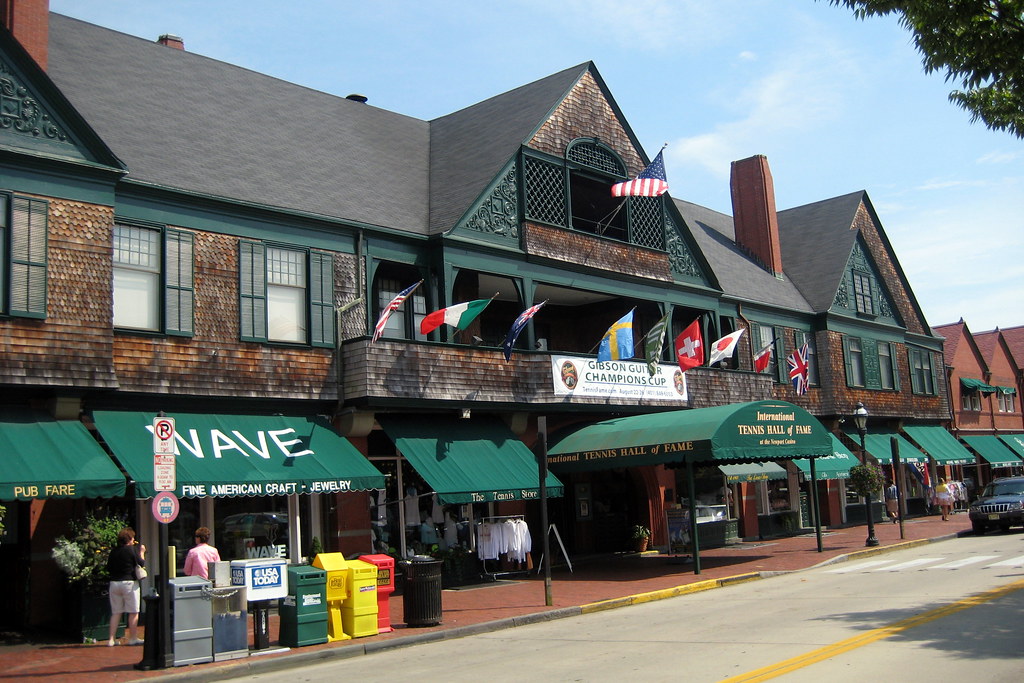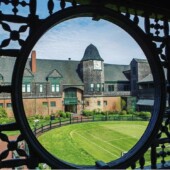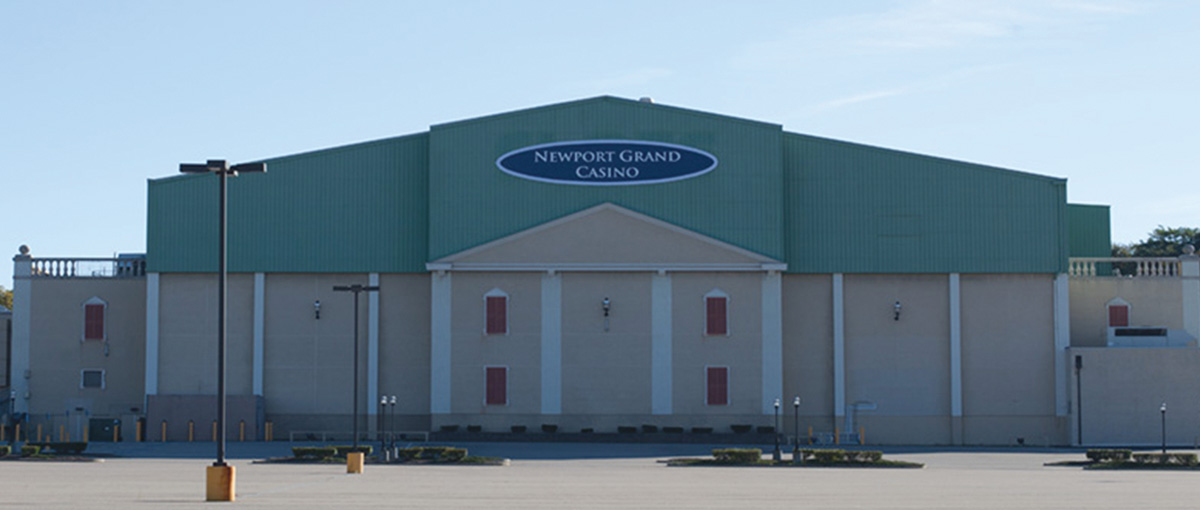Casino Newport
Posted By admin On 15/04/22Complete information on all casino listings found in Newport, Oregon, including address, telephone numbers and attached hotel information.
U.S. National Historic Landmark District Contributing Property | |
Casino facade in 2008 | |
| Location | Newport, Rhode Island |
|---|---|
| Coordinates | 41°28′56″N71°18′27″W / 41.48222°N 71.30750°WCoordinates: 41°28′56″N71°18′27″W / 41.48222°N 71.30750°W |
| Area | less than one acre |
| Built | 1879 |
| Architect | McKim, Mead & White |
| Architectural style | Shingle Style |
| Part of | Bellevue Avenue Historic District Bellevue Avenue/Casino Historic District (ID72000023 72000024) |
| NRHP reference No. | 70000083 |
| Significant dates | |
| Added to NRHP | December 2, 1970[1] |
| Designated NHL | February 27, 1987[2] |
| Designated NHLDCP | December 8, 1972 |
| Designated CP | December 8, 1972 |
- The Casino Theatre A visual masterpiece, the Casino Theatre served as both a 500-capacity removable seat theatre and as a ballroom for dances. The interior was gold-trimmed ivory with a sky blue ceiling, decorated with golden stars. It was the scene of many artistic performances, both amateur.
- Newport Casino It was ok, if your use to Vegas or CT size casinos you won't like it. It's more like a racino casino size seen it other states. They have a good size non smoking area so I can't comment on the smoking areas.
The Newport Casino is an athletic complex and recreation center located at 186–202 Bellevue Avenue, Newport, Rhode Island, United States. Built in 1880, it was designated a National Historic Landmark on February 27, 1987, in recognition for its architectural significance as one of the nation's finest Shingle style buildings, and for its importance in the history of tennis in the United States. The complex now houses the International Tennis Hall of Fame, and was the site of the earliest US Opens. It also hosted the first Newport Jazz Festival in 1954.
1879 – 1900[edit]
The complex was commissioned in 1880 by James Gordon Bennett, Jr. Legend states that Bennett placed a bet with his guest British Cavalry Officer, Captain Henry Augustus 'Sugar' Candy that Candy would not ride his horse up onto the front porch of Newport's most exclusive men's club – The Newport Reading Room. Candy won the bet, but the Governors of the Reading Room were not amused. Bennett and his infamous short temper did not take this kindly, and soon set about creating his own retreat, what would eventually become The Newport Casino.

Soon after deciding to create his own social club, Bennett purchased the Sidney Brooks estate, 'Stone Villa'. Directly across the street was a vacant lot, suitable for construction of the Casino. Bennett hired Charles McKim (soon to be of the firm McKim, Mead, and White) to design the Casino. By January 1880, Nathan Barker of Newport was contracted to begin construction.
The interior of the Casino, while generally outlined by McKim, was entrusted to Stanford White. Taking many elements and cues from the Japanese Pavilion at the 1876 Centennial International Exhibition in Philadelphia, White provided for a plan that was both secluded and open.
The Newport Casino opened to its first patrons in July 1880, and the general public got their first view in August 1880.
A theatre located at the rear of the property (extant) was completed in 1881. Its 500 seats were removable for dancing and the building was the scene of many social occasions for fashionable Summer visitors in the Gilded Age. One such attendee and early performer who lectured at the theatre in 1882[3] was Oscar Wilde.
The United States Lawn Tennis Association held their first championships at the Casino in 1881, an event that would continue through 1914. By this time, tennis was firmly entrenched as the key attraction at the Casino.
1900 – 1954[edit]
The first half of the 20th century was unkind to the Newport Casino. The Gilded age drew to a close with the onset of the Depression, and the Newport fell by the wayside as a summer resort for the wealthy and powerful. The Casino struggled financially as a social club right from the start, and by the 1950s the Casino was in sad shape. Like many of the mansions, there was the very real possibility that it would be demolished to make way for more modern retail space.
The United States Lawn Tennis Association held their first championships at the Casino in 1881, an event that would continue through 1914. By this time, tennis was firmly entrenched as the key attraction at the Casino.
Candy and Jimmy Van Alen took over operating the club, and by 1954 had established the International Tennis Hall of Fame in the Newport Casino. The combination of prominent headliners at the tennis matches and the museum allowed the building to be saved.
Casino Newport Oregon
It stands today as one of the finest examples of Victorian Shingle Style architecture in the world. The buildings are generally well preserved, and the Casino Theatre which was in a state of disrepair was recently restored and is currently leased to Salve Regina University. The theater occasionally still shows films, mostly during the Newport International Film Festival or charity events.
1955 - Present[edit]

The complex of buildings has undergone tremendous restoration during the modern era. The Real Tennis building was restored in 1980 and the National Tennis Club was formed to use and preserve this game, from which the modern game of tennis evolved. The USTA (United States Tennis Association) Galleries have been restored in a series of renovations, first in the 1970s and then again in the 2010s to make the second and third floors of the main building into a suitable repository for the exhibition and study of pieces in the Tennis Hall of Fame collection. The most recent renovation exposed many original McKim, Mead & White fireplaces that had long been hidden behind sheet-rock walls.

The Casino Theatre, which had long been used primarily for storage, was restored in partnership with nearby Salve Regina University in 2010 to house their theater program during the school year and to be used for a variety of films, lectures, and other programming during the summer months. One important change in the Theater renovation is that temporary seating at on level of the original design was replaced with graded permanent seating, but the old chairs were accurately replicated right down to the top-hat storage underneath each chair.
Recently several large construction projects have helped reshape the campus. In 2014, a steel indoor tennis building and gas station were demolished and a 19th-century cottage was relocated to create space for a large new structure designed in the Shingle Style by Robert A.M. Stern to house three new indoor courts, a gymnasium, an enlarged pro shop and Hall of Fame office. Three new outdoor courts are enclosed by an inflatable bubble roof to double the number of year-round courts available on the campus. The stadium court and stands also underwent renovation on 2016 to replace old bleacher seating located on the South end of the courts with new individual seating modeled on the seating at Wimbledon. This renovation also modified the West Stands, which had originally been built as part of the coaching and riding ring of the original complex, which was converted into the showcase Stadium Court in the 1970s.
Buildings[edit]
The complex includes:
- The Casino (shops, a restaurant, offices, and the International Tennis Hall of Fame)
- Horseshoe Piazza and Court
- Bill Talbert Stadium
- Court Tennis Building (The National Court Tennis Club)
- Theatre – restored and managed by Salve Regina University Department of Performing Arts
- Indoor tennis courts (Newport Casino Indoor Racquet Club)
- Various grass tennis courts(Newport Casino Lawn Tennis Club)
Sports[edit]
The Newport Casino was never a public gambling establishment. Originally, 'casino' meant a small villa built for pleasure. During the 19th century, the term casino came to include other buildings where social activities took place.
In its heyday during the Gilded Age, the Newport Casino offered a wide array of social diversions to the summer colony including archery, billiards, bowling, concerts, dancing, dining, horse shows, lawn bowling, reading, lawn tennis, tea parties, and theatricals. It was best known as the home of Americanlawn tennis; the Casino hosted the 1881–1914 National Championships, later called the U.S. Open. Between 1915 and 1967 it hosted the Newport Casino Invitational men's tennis tournament.
Today, there is still an active grass-court tennis club, as well as an indoor tennis club. The Newport Casino Croquet Club offers championship croquet play on Newport's grass courts.
The Court Tennis Building is part of the original complex, built in 1880. It burned down in 1945, but was rebuilt in 1980. It is home to the National Tennis Club and was the site for two different world championship series matches (in 2004 & 2016) for this eight-hundred year old sport.
See also[edit]
References[edit]
- ^'National Register Information System'. National Register of Historic Places. National Park Service. January 23, 2007.
- ^'Newport Casino'. National Historic Landmark summary listing. National Park Service. Archived from the original on 2009-08-12. Retrieved 2008-06-29.
- ^Cooper, John. 'Oscar Wilde in Newport'. Oscar Wilde in America. Retrieved 1 March 2018.
External links[edit]
| Wikimedia Commons has media related to Newport Casino. |
- Historic American Buildings Survey (HABS) No. RI-331, 'Newport Casino, 186–202 Bellevue Avenue, Newport, Newport County, RI', 21 photos, 21 data pages, 1 photo caption page
- Description of the Casino Theatre
- Official site of the International Tennis Hall of Fame
Gallery[edit]
Newport Casino original façade, 1880
Postcard, North Wing of Newport Casino, taken from Horseshoe Courtyard, circa 1900
Newport Casino, Bellevue Ave. façade, 1970
Newport Casino, Horseshoe Court, 1970
Newport Casino in 2009
Casino Newport Wales
| Preceded by first venue | Home of the U.S. Championships 1881–1914 | Succeeded by West Side Tennis Club 1915–1920 |
We are often asked what buildings influence our design work, as well as the architects from whom we find inspiration. While there are many extraordinary buildings throughout the world that provide creative inspiration, there is one — right here in New England — that holds particular meaning for us. The building is The Newport Casino, located in historic Newport, Rhode Island. Similarly, the firm that designed the building, McKim, Mead & White, has provided us with far-reaching design inspiration with their sensitive use of materials and scale.
The Newport Casino, which houses the International Tennis Hall of Fame, opened in 1880 as a social club for Newport’s turn of the century “summer society.” Although the Newport Casino was never a gaming site, it is said, ironically, that the building’s roots involve a betting story. The legend goes that its founder, New York Herald Publisher James Gordon Bennett, Jr., bet his polo partner, Captain Henry Augustus Candy, to ride his horse up onto the porch of an exclusive men’s club (The Newport Reading Room) of which he was a member at the time. Candy took the bet — after which his guest membership was promptly revoked. Soon after, Bennett decided to purchase nearby land and build a club of his own. He hired McKim, Mead & White, the premier firm of that time, to design the club with both private and public areas. When the Newport Casino opened in the summer of 1880 it immediately became the epicenter of Newport’s social elite.

Today, The Newport Casino is considered a premier example of American Shingle Style architecture and in 1987 was designated a National Historic Landmark. Designed with shingle, brick, and stone, it was largely inspired by the architects’ extensive travels throughout Europe. During this period—which followed our country’s 1876 Centennial celebration— the Shingle Style combined English influence with renewed interest in Colonial American architecture. Architects such as McKim and his partners adopted the weathered, shingled facades of colonial buildings, and celebrated the use of beautiful, simple materials in an architectural way.
The structure of The Newport Casino included a horizontal street-facing façade with restaurants and storefronts on the first floor, and billiards, club and reading rooms on the second and third floors. Tall chimneys and gables added vertical rhythm to the exterior while several open porches provided easy outdoor access, adding to the overall aesthetic.
Over one hundred years later, the romantic design of The Newport Casino was the source of inspiration for The Boathouse and Atlantic, an important design project for us in another New England village setting. Located on Main Street in historic Edgartown on Martha’s Vineyard (similar to The Newport Casino’s commercial location in Newport) the architecture replaced a tired, 1960’s building with a Shingle Style structure housing a private club (The Boathouse) upstairs and a public space (Atlantic restaurant) at street level. With its gables, weathered shingles and awnings, the building’s exterior reflects the wonderful character, scale, and materials of The Newport Casino. Similarly, retail space on the ground floor effectively animates the streetscape, while public access to the harbor around the building (a critical component of the design), helped make this project a catalyst for the revitalization of downtown Edgartown.
We remain inspired in the extraordinary work of McKim, Mead & White and take cues from their sensitive use of materials, scale and romantic architectural language. If you have the opportunity, visit the Newport Casino and Tennis Hall of Fame. The building —and its history—will not disappoint.